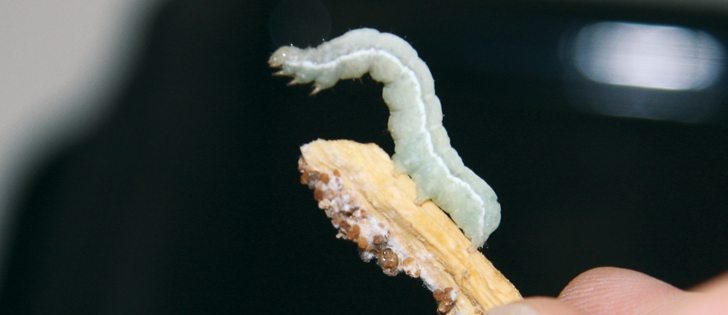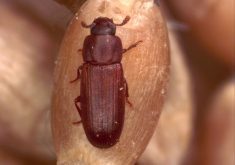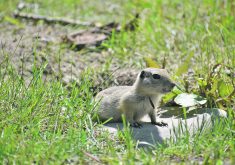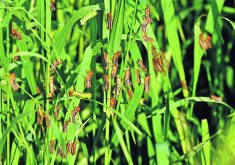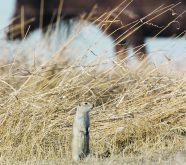Study of species, distribution | Researchers want producers to scout fields and collect live specimens for biological analysis
It makes sense to attribute slow crop emergence to a late spring, but it might also be due to cutworms eating their way through nascent seedlings.
Now is the time to scout for cutworms, identify the type and get advice on potential control measures, entomologists advise. It’s also time to call researchers with the western cutworm project so they can get live samples.
Jennifer Otani, pest management biologist with Agriculture Canada in Beaverlodge, Alta., said entomologists and researchers across Western Canada are involved in the study, which is now entering its third and final year.
Read Also

Farming Smarter receives financial boost from Alberta government for potato research
Farming Smarter near Lethbridge got a boost to its research equipment, thanks to the Alberta government’s increase in funding for research associations.
“We really want to encourage growers to be out as soon as they’re done their seeding,” she said.
Collection of live specimens will help the team identify the species and conduct basic biological analysis. Though farmers are familiar with the more damaging species of cutworm, others are not as well understood.
“Some of them are lesser known in terms of the previous research that has been done. Basic biology is like their distribution across the Prairies (and) more detailed life cycle information,” said Otani.
“One of the really cool things with our project now is we’re also looking at some of the natural enemies that affect these cutworms in our fields.”
Funding through the Canola Agronomic Research Program has allowed researchers to examine cutworms at various levels. Some are examining species, distribution and collection, others are using diagnostic tools at the molecular level to identify the larvae quickly, and still others are looking at cutworms’ natural enemies.
Jeremy Hummel, a member of the research project team based in Lethbridge, is rearing cutworms in his lab at Lethbridge College. His work helps in species identification and assists other researchers with genetic analysis and development of pheromone blends to monitor adult cutworms.
“The more cutworms we hear about, the better,” said Hummel.
“We’d prefer to know about the cutworms before they’re sprayed so we can get extra information, but even fields that have been sprayed, we can send those dead cutworms off for identification using DNA analysis. We can even determine whether they’ve been infected with pathogens or infested with parasites from that DNA analysis.”
The latter research is particularly interesting for Otani. She said her work is already showing natural enemies are important to cutworm suppression, whether or not cutworm activity is apparent.
“I think it’s really important that we’re finding the natural enemies fairly consistently, and that means they’re always exerting some kind of pressure, which I think ultimately is a very important concept for growers because that means there’s a lot of stuff happening in their fields when they don’t notice the cutworms,” she said.
“Maybe we can optimize these natural enemies and maybe these populations can interrupt these outbreak cycles that we’ve seen in the past. That would be our dream goal.”
Cutworm species identification is important in determining effective control measures.
Some species of cutworm emerge at night to feed, while others remain underground and would not be affected by insecticide spraying. Identification informs decisions on control.
“That’s where we’re hoping that we can help the grower right away,” Otani said.
“In general, the research project is really aiming to get a better understanding of the cutworms’ diversity and to ultimately give producers and agronomists or agrologists better tools to identify them.”
The project is funded through the canola program, but cutworms don’t limit themselves to that crop. Some species, like the glassy cutworm, stick to grasses and others have a wider dietary range.
A single field can host as many as five cutworm species, and knowing the type can provide guidance on future crop rotation that might limit crop damage.
Otani and Hummel said they would prefer to have research team members collect live cutworm samples from fields and will try to respond quickly to farmer reports of sightings.
“We won’t turn away samples from other people, but what we’ve found through the course of this project is that when producers are collecting cutworms, they often get quite damaged, and we often get them just as they are dying,” Otani said.
Information about the cutworm project can be found at www.western forum.org.




